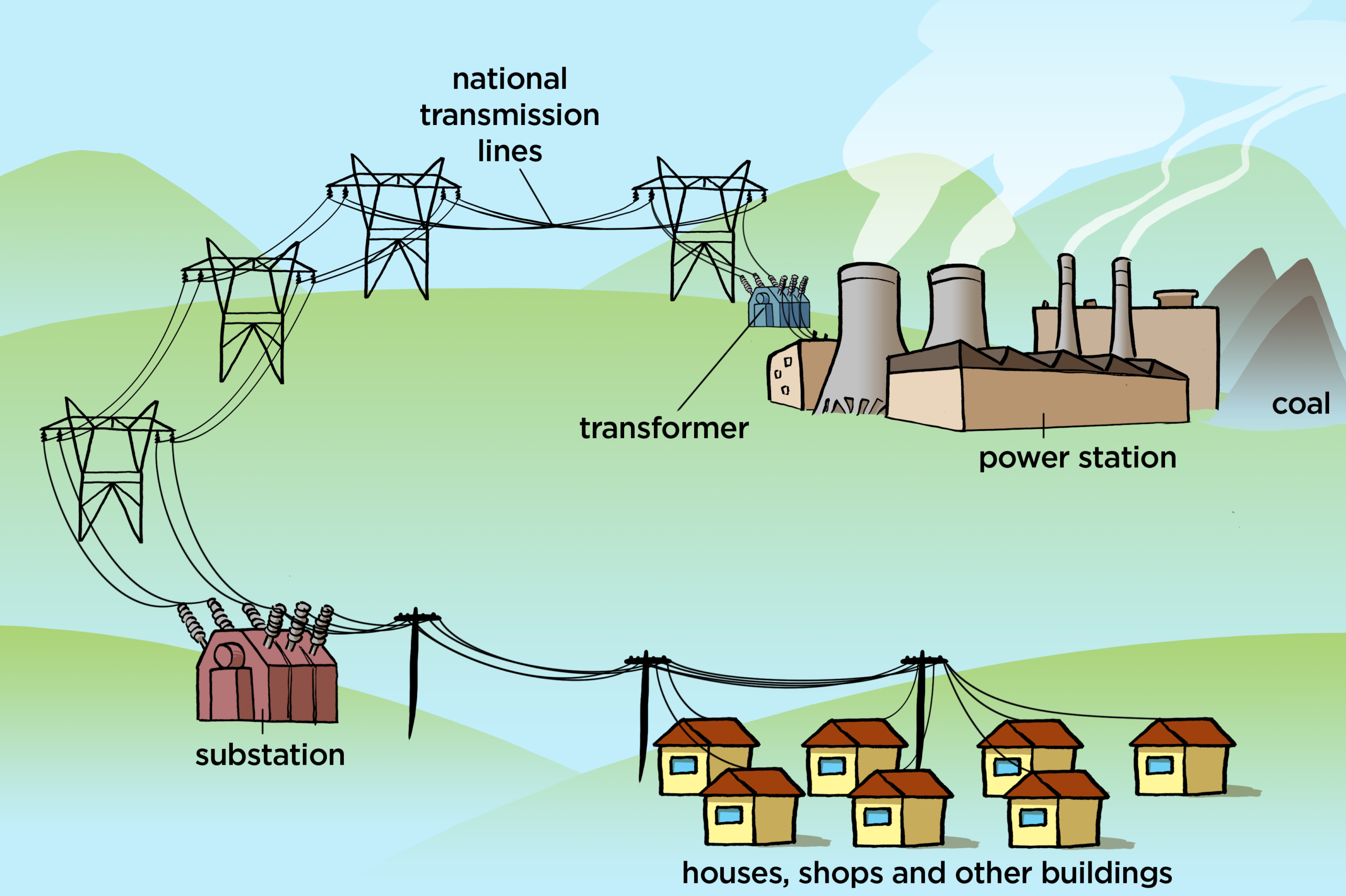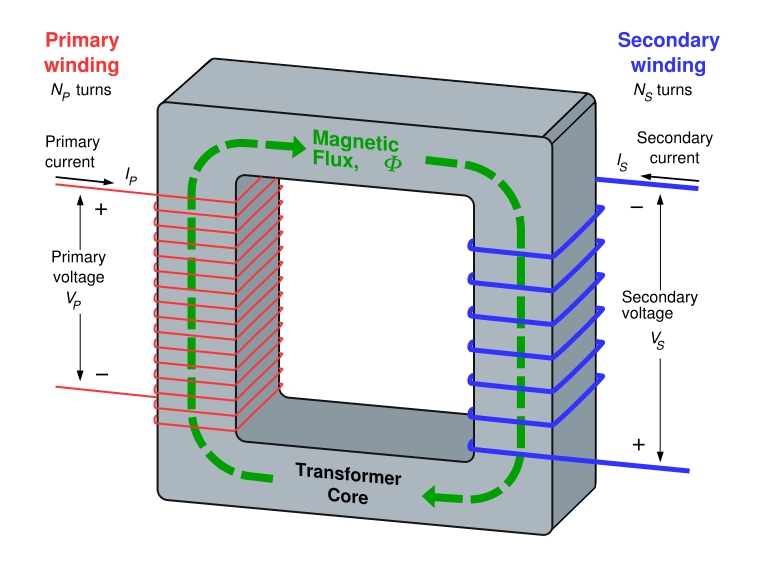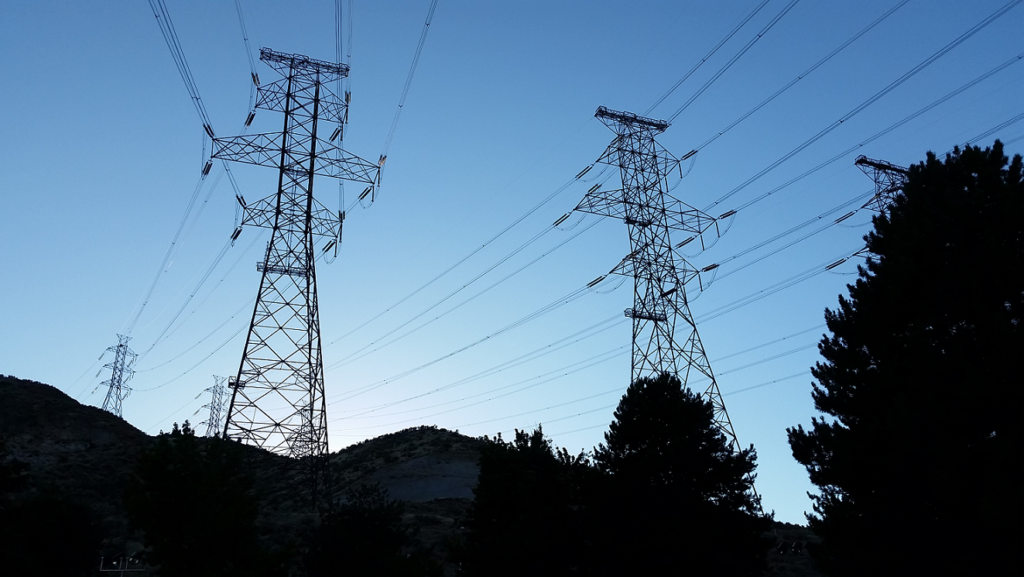AC in long-distance transmission- The usual alternating current has a frequency of 60 Hz in North America and 50 Hz in Europe. The current has a periodic back-and-forth direction in a second, and the energy flows continuously from the electric source to the device.
This alternating current has the advantage of modifying voltage quickly by using transformation. Using transformers allows us to transmit power at high voltages for long distances and, on the other hand, take down the voltage for typical applications. This process minimizes the energy loss in electrical power transmission.
Advantages of AC in Long-Distance Transmission
AC generators produce electric power in power stations such as power plants, wind, hydro turbines, etc. All the power stations are far from consumption facilities and need AC in long-distance transmission lines to provide a source in cities and towns. The described process of using transmitting lines for electrical energy to send it to the facilities is called power transmission.
Power transmission has some issues and the most important one is power loss. Power is converted to heat due to the Joule heating in the cables and transmission lines. There are kilometers of transmission lines, and it makes a sizable fraction of power.
Parameters that have impacts on power transmission are:
P: Total power we want to transmit, or we lose in lines. It is measured in watts.
I: Electric current in the system. It is measured in amperes.
V: Voltage measured in volts.
R: Resistance of the wires. It is measured in ohms.
Power loss: heat produced in the wires.
P_{total}=VI
P_{loss}=RI^{2}
Efficiency= \frac{P_{loss}}{P_{total}}
For minimizing the power loss, we should reduce the current or the resistance of the transmission lines. We use thick wires in the lines to reduce the resistance, but the production cost and other related expenses increase by using much thicker cables. This method is not economical for reducing power loss.
As we used alternating current and AC generators in long-distance transmission and the systems, there is an easy way for us. The most important feature of AC in the long-distance transmission is the property of voltage and the capability of stepping up and down in the transformers. Using this method increases the voltage at the base, and the power source decreases the current and substantially reduces the power loss. We can use another step-down transformer and facilities near the cities to have appropriate voltage and current for consumption in residential areas. Using transformers is an efficient and economical way to prevent power loss and save energy.

Does AC in Long-Distance Transmission Travel Further Than DC?
As discussed in the previous section, it is not true that AC travels farther than DC; it is all because AC can be transmitted with less power loss. Resistance in the transmission cables and wires is the same, and heat is produced by the current flow in them. This power loss shows itself by the lower voltage at the end (cities) compared to the power station’s voltage.
To reduce the loss, we need to decrease the current on the lines. Transformers are critical devices in transmission, and they solve the problem by reducing the current and increasing the voltage in the lines. The lines can carry 100,000 to 700,000 V, and as a result, transmission lines are super dangerous. You should not go near any line, and that is why they are far from home. Near the cities, transformers change the voltage to 120 or 240 volts as customer needs.
It is hard to accomplish changes in DC voltage, and the loss in the transforming process is significant. The aim of using transformers is to reduce loss, and using DC is the opposite of what we are trying to do. The efficiency of the AC transforming is about 95 percent, and we can even reach higher values.
Transformers in Power Transmissions
Transformers use electromagnetic induction to pass alternating current from one circuit to another. It usually works for increasing or decreasing voltage and current for different applications. Transformers just pass alternating current to the second circuit and are not practical for direct current applications, and you should know this. AC in long-distance transmission needs these essential parts in stepping up and stepping down.
Principles of Transformers
The power keeps constant in transformers in voltage increase and decrease, and it must not be a surprising question for you. The increase and decrease in the current and voltage are inverses, and that is why power does not vary.
P=V_{1}I_{1}= V_{2}I_{2}
As discussed before, electromagnetic induction is the cause of changes in voltage and current. When we use AC in the primary coil, the alternating current makes a magnetic field in the system, which can be changed. Changing magnetic field and flux includes its impact on the secondary coil and induces a voltage there. That is why DC can not be used in this system, as DC is constant and can not make a magnetic field in the coils.

The ratio of the Ns to the Np directly changes the voltages in the input and the output. This ratio, known as the turns ratio, is the ratio of the number of turns in the primary to the secondary. The relation between can be represented by:
N_{p}N_{s}=V_{p}V_{s}=I_{p}I_{s}
where:
- Np: Number of loops or turns in the primary coil.
- Ns: Number of loops or turns in the secondary coil.
- Vp: voltage in the primary circuit
- Vs: voltage in the secondary circuit
- Is: current in the primary circuit
- Ip: current in the secondary circuit
If the number of loops in the primary coil is greater than the secondary one, then the voltage in the secondary circuit would be larger compared to the other side. This transformation is known as the step-down in the transformers. On the other hand, by increasing the loops in the secondary coil, we can have a step-up transform and larger voltage in the secondary circuit.
Buy Equipment or Ask for a Service
By using Linquip RFQ Service, you can expect to receive quotations from various suppliers across multiple industries and regions.
Click Here to Request a Quotation From Suppliers and Service Providers
Read More In Linquip



